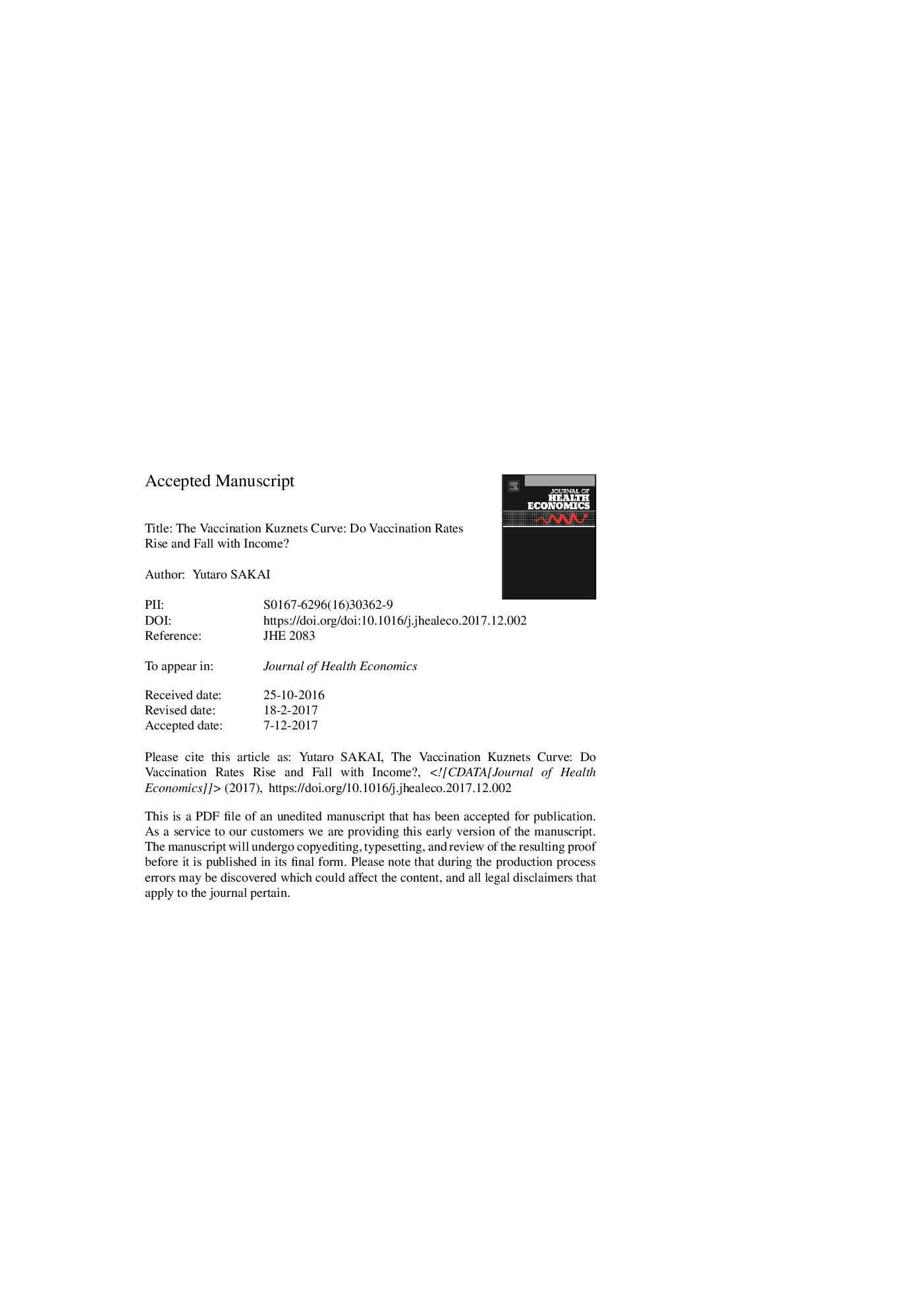| Article ID | Journal | Published Year | Pages | File Type |
|---|---|---|---|---|
| 7362948 | Journal of Health Economics | 2018 | 33 Pages |
Abstract
This paper presents a new stylized fact about the relationship between income and childhood vaccination. It shows vaccination rates first rise but then fall as income increases. This pattern is observed in WHO country-level panel data, and in US county-level panel and individual-level repeated cross-section data. This data pattern suggests that both low and high-income parents are less likely to follow the standard vaccination schedule, and that such behavior is reflected in the vaccination rate at the population level. I provide several alternative explanations as to why we observe this data pattern, including avoidance measures, medical care, and social segregation.
Related Topics
Health Sciences
Medicine and Dentistry
Public Health and Health Policy
Authors
Yutaro Sakai,
